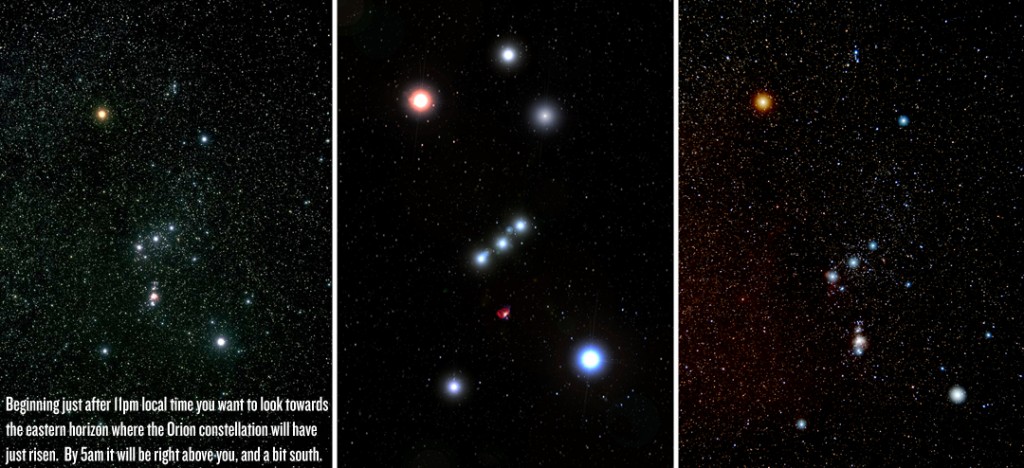It’s been 26 years since Halley’s Comet passed through our inner solar system, leaving behind a bounty of ice chunks and comet debris in its wake. Ever since, we’ve been given a biannual pair of meteor shower treats: once in the early part of May known as the Eta Aquarids, and the other in mid-late October known as the Orionids. This shower was nicknamed the Orionids because the meteors always fan out from a region to the north of Betelgeuse, the second brightest star in the Orion constellation. October 20, 2012 is particularly perfect timing because the Moon sets at 11pm local time which means your direct and peripheral vision will catch a lot more meteors. NBC NEWS writes, “The best time to see the Orionid meteor shower is anytime from about 1am-2am local daylight time until around dawn, when the shower’s radiant (in Orion’s upraised club, just north of the bright red star, Betelgeuse) is highest above the southern horizon … Currently, Orion appears ahead of us in our journey around the sun, and has not completely risen above the eastern horizon until after 11 p.m. local daylight time. At its best several hours later at around 5am (when Orion will be highest in the sky toward the south) the shower will typically produce around 20 to 25 meteors per hour under a clear, dark sky.” It’s not unusual to hear sonic booms during the Orionid meteor shower, as well as unusually multicolored trails due to light refracting through the ice crystals and water. For more information simply CLICK HERE.
A User’s Guide To Saturday Night’s Multicolored Orionid Meteor Shower (Including The Sonic Booms)
Brent Lambert
Writer, editor, and founder of FEELguide. I have written over 5,000 articles covering many topics including: travel, design, movies, music, politics, psychology, neuroscience, business, religion and spirituality, philosophy, pop culture, the universe, and so much more. I also work as an illustrator and set designer in the movie industry, and you can see all of my drawings at http://www.unifiedfeel.com.


